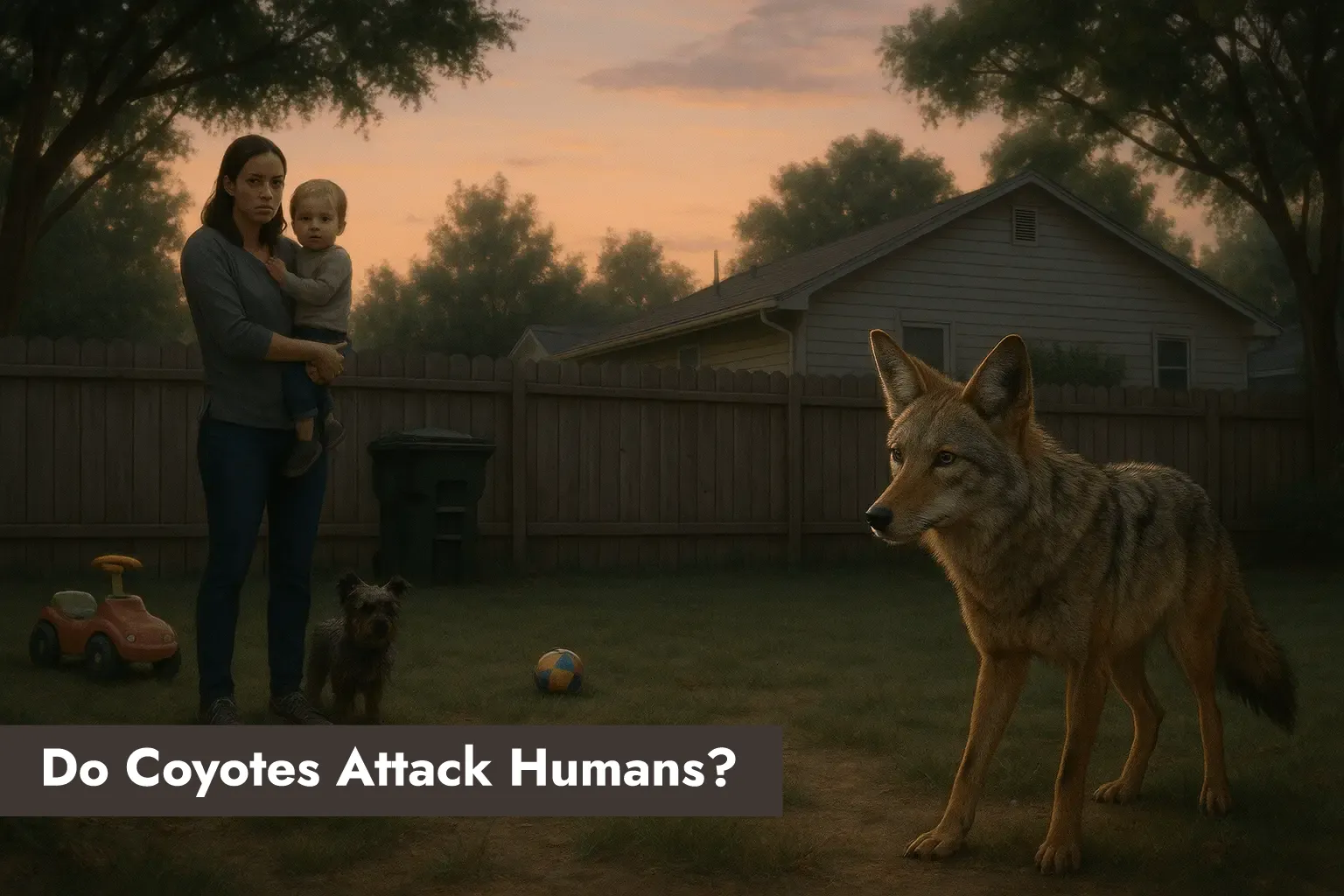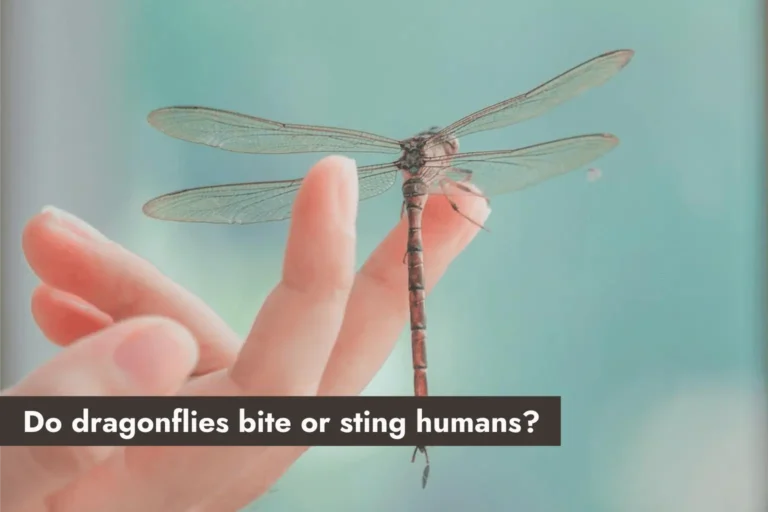Do Coyotes Attack Humans? Facts, Risks & Essential Safety Tips
Introduction
If you live in a suburban neighborhood, like many families across the United States, you’ve probably noticed wildlife getting a little closer to home. Coyotes, in particular, are becoming frequent visitors in backyards, parks, and even school grounds. But spotting these elusive creatures so close to your family and pets naturally raises questions—especially one crucial concern: do coyotes attack humans?
You’re not alone in your concern. Coyote sightings in populated areas are indeed on the rise. According to research from the Urban Coyote Research Project, coyotes have become increasingly comfortable navigating human-dominated landscapes. In fact, sightings have surged dramatically, especially in suburban regions such as those near Austin, Texas, California, and other rapidly expanding communities.
However, before fear takes hold, it’s important to consider context:
- Coyote attacks on humans are rare, with fewer than 10 incidents recorded annually across the United States, according to data from the Humane Society.
- Most coyote interactions are harmless, involving fleeting glimpses as these cautious animals prefer avoiding human contact.
- Attacks, when they do occur, are typically the result of habituation—when coyotes become too accustomed to human-provided food or easy access to garbage, resulting in bolder behavior.
As a parent, pet owner, or active community member, understanding the real risks, preventative measures, and how to respond effectively can dramatically enhance safety. In this comprehensive guide, you’ll gain clear answers and practical tips, empowering you to confidently manage coyote encounters while minimizing any potential risks to your family and pets.
Let’s dive deeper into facts, myths, real-life cases, and safety essentials so you’re thoroughly prepared and informed.
Do Coyotes Attack Humans? What the Statistics Say
If you’ve spotted coyotes wandering through your neighborhood or near parks where your children play, it’s understandable to feel uneasy. But let’s look carefully at what the numbers actually say about coyote attacks on humans.
How Common Are Coyote Attacks?
Coyotes can indeed pose risks to humans, but these incidents are extremely rare. According to the Urban Coyote Research Project, across the entire United States, fewer than 10 human attacks are typically documented each year. When considering the millions of interactions humans have with coyotes annually, this number is remarkably small.
Fatal vs. Non-fatal Incidents
- Fatal attacks: In recorded history, fatal coyote attacks are extraordinarily uncommon. In fact, only two confirmed fatal cases have occurred in North America in the past century.
- Example: A tragic incident in Nova Scotia in 2009 resulted in a woman’s death during a hike—a highly unusual occurrence, and authorities pointed out the atypical boldness of those coyotes involved.
- Non-fatal attacks: Most reported incidents involve minor injuries or bites and typically occur due to habituation—where coyotes lose their natural fear because they’re regularly exposed to humans or human food sources.
Which Areas See More Attacks?
Suburban communities and urban fringes—such as those around Austin, Los Angeles, and Chicago—tend to see more frequent coyote sightings. However, an increased presence doesn’t necessarily mean increased attacks. Rather, it highlights the adaptability of coyotes to suburban life, drawn by accessible food and shelter opportunities.
Who is at Greatest Risk?
- Young children: More vulnerable due to their size, though serious incidents remain extremely rare.
- Pets: Small dogs and cats face greater risks from coyotes than humans, especially if left unattended outdoors during dawn, dusk, or nighttime.
Putting Risk into Perspective
To put the risk in perspective, consider this analogy: You’re statistically far more likely to be injured by a domestic dog or struck by lightning than to experience a coyote attack. But vigilance and preparation are still essential—especially for families like yours who enjoy outdoor activities and daily walks.
With the right information and preparation, it’s entirely possible to coexist safely with these wild neighbors. Next, let’s explore the key factors behind why coyotes might become aggressive and how understanding these reasons can help keep your family safe.
Why Do Coyotes Sometimes Attack Humans?
When you hear about coyote encounters in neighborhoods similar to yours, it’s natural to wonder what exactly triggers these rare attacks. Understanding why coyotes might become aggressive can empower you to take proactive steps and reduce risks to your family and pets.
Habituation: When Coyotes Lose Their Natural Fear
Coyotes are naturally cautious and typically steer clear of humans. But sometimes they become habituated—a process where they gradually lose their instinctual fear due to frequent interactions with people.
Common behaviors leading to habituation include:
- Feeding coyotes intentionally or unintentionally (e.g., leaving pet food outside).
- Improper trash disposal that attracts coyotes looking for easy meals.
- Regular exposure to humans without negative consequences (no deterrents used).
When coyotes become comfortable approaching residential areas, they may start viewing humans less as threats and more as potential sources of food.
Health-Related Factors: Rabies and Disease
Although extremely uncommon, illness can influence coyote behavior significantly. Rabid coyotes or those suffering from diseases like distemper might act unpredictably or aggressively. According to the Centers for Disease Control (CDC), rabies incidents involving coyotes are rare, but infected animals pose a serious risk.
- Signs of illness in coyotes include unusual aggression, lack of fear, or disoriented movements.
- If you see a coyote exhibiting strange behavior, report it promptly to local animal control authorities.
Coywolves and Behavioral Changes
Another factor often discussed is hybridization—specifically, the emergence of “coywolves” (coyote-wolf hybrids). These hybrids tend to be larger and sometimes bolder, which might increase their confidence around humans, although attacks remain exceedingly rare.
In reality, coywolves are still relatively uncommon in most suburban regions. However, knowing they exist highlights the importance of staying aware and informed about local wildlife.
By understanding these underlying reasons, you’re better equipped to implement simple but effective strategies to ensure your neighborhood remains safe for children, pets, and the community as a whole. Next, we’ll dispel common myths about coyote attacks so you can clearly separate fact from fiction.
Common Myths About Coyotes Attacking Humans
As coyotes become more visible in suburban neighborhoods, especially around places like Austin, misinformation and myths can quickly spread, causing unnecessary worry for families. Let’s clear up some common misunderstandings about coyote behavior to help you better assess the real risks.
Myth 1: Coyotes Frequently Hunt Humans
Fact: Coyotes do not see humans as prey. They’re naturally cautious and typically prefer smaller animals like rodents, rabbits, and birds. Cases where coyotes actively “hunt” people are extraordinarily rare and usually involve abnormal conditions like severe habituation or illness.
Myth 2: Coyotes Only Come Out at Night
Fact: While coyotes are indeed more active around dawn and dusk, known as crepuscular behavior, it’s normal to see them during the day as well. Daytime sightings don’t automatically indicate aggressive or problematic behavior, although daytime activity can increase during breeding seasons or when feeding pups.
Myth 3: Coyotes Attack Humans Because They’re Starving
Fact: Coyotes are highly adaptable and resourceful animals. They rarely resort to attacking humans out of hunger. Most incidents occur due to coyotes being conditioned by human-provided food sources—like pet food, garbage, or intentional feeding—which makes them lose their natural fear.
Myth 4: All Coyotes Carry Rabies and Are Dangerous
Fact: According to the Centers for Disease Control and Prevention (CDC), coyotes are among the least likely wildlife species to carry rabies. While it’s true that any mammal can potentially contract rabies, coyotes represent fewer than 1% of wildlife rabies cases reported in the U.S.
Myth 5: Coyotes Usually Travel and Attack in Packs
Fact: Coyotes typically hunt and forage alone or in pairs. Packs are mainly formed during the breeding season, and group attacks on humans are exceptionally uncommon. When a group is spotted, it often involves juveniles exploring their environment rather than hunting as a coordinated pack.
By understanding these common myths, you can separate fear-driven stories from factual information. Equipped with accurate knowledge, you’ll feel more confident about safely coexisting with coyotes in your community, keeping your family and pets safe.
Real-Life Examples: Notable Coyote Attacks on Humans
Even though coyote attacks on humans are rare, learning about actual incidents can provide valuable insights and help you better understand when and why such events occur. Here are three notable cases, each highlighting different circumstances that can lead to coyote attacks.
Fatal Attack: Taylor Mitchell (2009)
In one of the most widely reported incidents, Canadian singer-songwriter Taylor Mitchell tragically lost her life in October 2009 during a hike in Cape Breton Highlands National Park, Nova Scotia. Wildlife experts later confirmed this incident was highly unusual, emphasizing that coyotes involved showed unusually aggressive and abnormal behavior.
Key factors:
- Remote hiking trail
- Coyotes displayed bold, predatory behavior (extremely rare)
- Highlighted importance of situational awareness even in remote areas
Non-Fatal Attack: Child in Irvine, California (2015)
In May 2015, a 3-year-old girl was bitten by a coyote at a suburban park in Irvine, California. The child suffered minor injuries and was quickly treated. Authorities determined that the coyotes in this region had become habituated due to regular human contact and feeding.
Key factors:
- Busy suburban park environment
- Habituation from human feeding or easily accessible food sources
- Importance of monitoring young children closely outdoors
Rabid Coyote Incident: Ossining, New York (2018)
In March 2018, multiple people in Ossining, New York, encountered an aggressive coyote, resulting in several bites and injuries. Authorities later confirmed the animal tested positive for rabies, prompting swift public health responses including vaccinations for those exposed.
Key factors:
- Rabies-infected coyote leading to atypical aggression
- Rapid response and medical intervention minimized serious consequences
- Importance of reporting unusual wildlife behavior promptly
These cases, though alarming, emphasize that while coyote attacks can happen, each incident typically involves unusual or abnormal circumstances. They serve as important reminders to stay vigilant, take preventive measures seriously, and always be cautious—but not overly fearful—when encountering coyotes in your community.
Essential Tips to Prevent Coyote Attacks
As a parent and pet owner living in a suburban area, prevention is your strongest tool when it comes to minimizing the risk of coyote encounters and ensuring your family’s safety. Here are practical, actionable steps you can take today to reduce the likelihood of coyotes coming too close for comfort.
Securing Your Property
Coyotes are opportunistic, attracted primarily by easy sources of food and shelter. Here’s how you can discourage them from exploring your yard:
- Secure trash bins: Use tightly sealed garbage containers. Coyotes are expert scavengers; don’t make your home their easy buffet.
- Avoid leaving pet food outside: Coyotes are attracted to pet food left unattended—bring food indoors immediately after pets finish eating.
- Trim bushes and landscaping: Keep vegetation trimmed to reduce hiding spots for coyotes.
Protecting Pets and Children
Young children and pets, especially smaller animals, can appear as easy targets to a curious or hungry coyote. Consider these essential guidelines:
- Supervise small children outdoors: Always stay close when your kids play outside, particularly near dusk or dawn.
- Leash pets during walks: Keep dogs on leashes, especially in parks or wooded areas known to have coyotes.
- Avoid leaving pets unattended outside: Coyotes might view unattended pets, particularly small dogs or cats, as potential prey.
Avoiding Attraction
Coyotes naturally follow food sources, so reducing attractants around your home makes a significant difference:
- Bird feeders caution: Regularly clean up spilled birdseed to avoid attracting rodents, which in turn attract coyotes.
- Manage fruit trees: Remove fallen fruit from trees promptly. Overripe fruit can attract wildlife, creating indirect coyote food sources.
- Don’t intentionally feed wildlife: Intentionally feeding deer, raccoons, or other wildlife indirectly attracts coyotes.
By consistently following these preventive steps, you’re taking crucial proactive measures that make your home and neighborhood less appealing to coyotes. This helps ensure that these wild animals retain their natural fear of humans, greatly reducing the chances of negative encounters and keeping your family safe and confident outdoors.
How to Safely Handle a Coyote Encounter
Encountering a coyote can feel alarming, especially if you’re with your kids or pets. However, knowing exactly what to do can transform a potentially stressful moment into a manageable situation. Here’s how to safely respond, step-by-step.
If You See a Coyote at a Distance
Most coyote sightings are harmless, but it’s still wise to let coyotes know they’re not welcome nearby. Here’s what you should do:
- Stay calm and confident: Coyotes typically avoid confrontation.
- Never approach or feed: This encourages habituation and may lead to future aggression.
- Use hazing techniques: Make loud noises, wave your arms, or clap your hands to encourage the coyote to leave.
- Maintain eye contact: Show confidence by looking directly at the coyote while backing away slowly.
Face-to-Face Encounters
In the rare event a coyote approaches closely, remain calm and follow these specific steps to deter it safely:
- Stand tall and assertive: Make yourself appear bigger by raising your arms or jacket above your head.
- Speak loudly and firmly: Shout authoritative commands (“Go away!”, “Get back!”) to intimidate it.
- Throw small objects if needed: Toss stones, sticks, or small items toward—but not directly at—the animal to reinforce your threat.
- Keep children close: Pick up smaller children immediately to remove them from harm’s way.
If a Coyote Acts Aggressively or Attacks
Although extremely unlikely, if a coyote behaves aggressively or lunges toward you:
- Fight back vigorously: Use anything available—a backpack, keys, sticks, or rocks—to defend yourself aggressively.
- Protect vital areas: Shield your face, neck, and throat during an attack.
- Never run away: Running can trigger a chase response; slowly back away after asserting dominance.
- Seek immediate help: Once safely away, seek medical attention promptly if bitten or scratched.
By familiarizing yourself with these guidelines, you can confidently and effectively handle any coyote encounter—ensuring your family’s safety and peace of mind whenever you venture outdoors in your neighborhood.
After a Coyote Incident: Next Steps
Experiencing a coyote incident can be distressing, particularly when your family’s safety is at stake. Knowing exactly what to do afterward helps you respond quickly and calmly, ensuring the best outcomes for everyone involved.
Step 1: Seek Medical Attention Immediately
If you or a family member is bitten, scratched, or otherwise injured by a coyote, prompt medical care is essential:
- Wash wounds thoroughly: Immediately clean the bite or scratch with soap and warm water to prevent infection.
- Consult a doctor promptly: Even minor injuries need professional evaluation due to potential risks, such as rabies or other infections.
- Discuss rabies vaccinations: Your healthcare provider will guide you on the necessity of rabies shots based on local wildlife data and the specifics of your incident.
Step 2: Report the Incident to Local Authorities
It’s crucial to alert your local animal control, wildlife agency, or public health department following an encounter:
- Provide detailed information: Share specifics such as the exact location, time, and the behavior of the coyote.
- Include descriptions: If possible, describe the animal’s size, appearance, and any unusual behaviors.
- Help community safety: Reporting enables authorities to assess whether further action, like wildlife management interventions, is needed.
Step 3: Alert Your Neighbors and Community
Sharing your experience helps others stay informed and cautious:
- Notify neighborhood groups or forums: Alerting community platforms (social media groups, neighborhood watch) can raise awareness.
- Recommend preventive measures: Encourage neighbors to secure garbage, monitor pets, and supervise children outdoors.
Taking these proactive steps not only helps protect your family but also strengthens community awareness and preparedness, making future coyote encounters far less likely to escalate into dangerous situations.
Coyotes and Wildlife Control: When and How Intervention Happens
(Approx. 200–250 words)
Most of the time, coyotes quietly coexist in neighborhoods without causing problems. But in rare cases where they become aggressive, overly bold, or begin threatening public safety, wildlife control may step in. Understanding how and when intervention happens can help you know what to expect—and when to take action.
When Is Intervention Necessary?
Wildlife authorities don’t typically remove coyotes just for being seen in a neighborhood. However, they will intervene if coyotes:
- Repeatedly show aggressive or threatening behavior toward people or pets
- Exhibit signs of illness, such as rabies-like symptoms (staggering, unprovoked aggression)
- Become habituated—frequently approaching homes or humans without fear
- Attack or injure someone
In these cases, local agencies like Animal Control, state wildlife departments, or USDA Wildlife Services may investigate and determine the best course of action.
How Is a Problem Coyote Managed?
Depending on the severity and local laws, control methods can include:
- Education and community outreach: Encouraging better prevention practices before taking lethal steps
- Trapping and relocation (where legal)—though this is rare due to territorial instincts and low survival rates
- Lethal removal, especially in confirmed attack cases or rabies exposure scenarios
What You Can Do
- Report serious sightings to your local animal control or non-emergency police line
- Document behavior with photos or videos if safely possible
- Stay informed about your city or county’s wildlife policy—regulations can vary by region
In short, intervention is a last resort—but it’s an option when public safety is at risk. Being proactive and informed helps reduce the need for these more serious measures.
Frequently Asked Questions (FAQs) About Coyotes Attacking Humans
When coyotes start showing up in local parks or even backyards, it’s only natural to have questions—especially when your family’s safety is on your mind. Here are answers to some of the most commonly asked questions about coyote behavior and human safety.
Rarely. While coyotes are wild animals and should always be treated with caution, attacks on humans are extremely uncommon. Most coyotes prefer to avoid people and will flee if given the chance. Aggression typically occurs only when coyotes become habituated to human presence or feel cornered.
Most coyote activity occurs during dawn and dusk, but that doesn’t mean they won’t be seen in broad daylight—especially in suburban areas. Attacks can happen at any time, but they are still incredibly rare overall.
Yes—adult coyotes can easily jump or climb fences up to 6 feet tall. To deter them:
– Add outward-facing extensions (also known as “coyote rollers”).
– Avoid leaving items nearby that they can use as a “step up,” like stacked wood or bins.
Not necessarily. A simple sighting doesn’t warrant a report unless:
– The coyote appears aggressive, injured, or unafraid of humans.
– You notice repeated visits or bold behavior near homes, schools, or playgrounds.
When in doubt, report unusual or concerning behavior to your local animal control or wildlife agency.
Coyotes are not true pack hunters like wolves. They may travel in small family groups but typically hunt alone or in pairs. Seeing multiple coyotes together doesn’t necessarily signal a threat.
Coywolves—a hybrid of coyote, wolf, and sometimes domestic dog—do exist in parts of North America, especially the Northeast. While they tend to be slightly larger, there’s no solid evidence that they’re more aggressive toward humans. Like coyotes, they generally avoid people.
Conclusion and Additional Resources
While coyote sightings in suburban neighborhoods are becoming more common, actual attacks on humans remain incredibly rare. Most encounters are non-threatening and can be safely managed with a little knowledge and preparation.
As a parent, pet owner, or community member, it’s normal to feel uneasy when wildlife gets close—but remember: coyotes are typically shy and avoid humans unless they’ve become habituated or feel threatened. By understanding their behavior and following simple safety steps, you can dramatically reduce the risk of a negative encounter.
Key Takeaways:
- Don’t feed coyotes or leave out attractants like pet food or garbage.
- Supervise pets and young children during outdoor play, especially at dawn or dusk.
- Use hazing techniques confidently if you encounter a bold or curious coyote.
- Report aggressive or sick-looking coyotes to local authorities.
Additional Resources
For more information, community updates, and expert advice, visit:
By staying informed and proactive, you’re helping create a safer, more balanced relationship between people and wildlife in your community.



